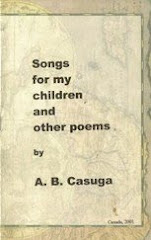LITERARY CRITICISM PART 2: DISCOVERING THE ARTISTIC PURPOSE AS A BASIS FOR CRITICISM
The preceding discussion on the nature of criticism singles out as its first step the definition of the purpose of the work of art from the work itself. Inductively, the appreciator arrives at this during analysis.
The question is, will he arrive at this? Will not the induced purpose vary from that of the artist’s? If what he induces varies from that avowed by the artist, will this render appreciation invalid?
In the first place, what is that purpose supposed to be? For our purposes – in the empirically-based appreciation of literature – it is what the author intended in presenting the work for appreciation. But is that information not derivable only from the author? If it were, then criticism will be of no moment – it will have started on the wrong footing, and would naturally end up with the wrong conclusion; hence, it would be futile and useless.
Literary history, however, provides ample evidence that the activity has prevailed to complete the tripartite relationship that must be endemic in any activity that involves literary appreciation: the artist, the critic, and the appreciator. The critic is the man in the middle whose function is to assist the undiscerning appreciator. This has become imperative because the growth of the artist’s awareness of things has not been in direct proportion to the growth of the appreciator’s. In many cases, critics have shown a more rapid development in this regard than even the artists themselves – because many of these critics are also creative artists (T.S. Eliot, Robert Penn Warren, Edgar Allan Poe, Archibald MacLeish, Gemino Abad, Edith Tiempo, to name a few).
To answer the first question, it is important to believe with F.R. Leavis that this purpose is derivable --- and the source may not be the author but the objective artistic result itself, the work of art that confronts the appreciator.
“But what I have to insist on is that intention in the important sense can only be determined by the tests applied in literary criticism. The analysis and judgment of works of literary art belong to the literary critic, who is one in so far as he observes a disciplined relevance in response, comment, and determination of significance. He is concerned with the work in front of him as something that should contain within itself the reason why it is so and not otherwise.
“The more experience --- experience of life and literature together --- he brings to bear on it the better, of course; and it is true that extraneous information may make him more percipient. But the business of critical intelligence will remain what it was: to ensure relevance of response and to determine what is actually there in the work of art.
“The critic will be especially wary how he uses extraneous knowledge about the writer’s intentions. Intentions are nothing in art except as realized, and the tests of realization will remain what they were. They are applied in the operation of the critic’s sensibility; they are a matter of his sense, derived from his literary experience, of what the living thing feels like --- of the difference between that which has been willed and put there, or represent no profound integration, and that which grows from a deep centre of life. The tests may very well reveal that the deep animating intention (if that is the right word) is something very different from the intention the author would declare.” (Leavis as quoted by H. Coombes in Literary Criticism. Page 9 (Underscoring supplied). 1
In quoting the above, Mr. Coombes is practically assuring the reader that such a purpose may be derived from the work. And this purpose, as has been stated earlier, is ordinarily pegged to the common purpose of all works in fine art: To objectify and subjectify (concretize and emotionalize) an otherwise abstract aesthetic experience for the purpose of soliciting or engendering aesthetic delight in the artist as well as in the appreciator.
It is the achievement of this purpose which is judged by the critic. Quite obviously, the purpose includes within its purview the achievement of that which is artistic --- that which is objectified to convey an aesthetic experience to the appreciator (or even to the author-artist himself) so that he may experience a satisfaction of his aesthetic attitude (taste). Therefore, the appreciator is judging the achievement of the artist along the lines of artistry --- the skill he applied into the work of art.
This is the purpose which becomes the basis for what Mr. Leavis terms the “relevance of response,” something the critic must work for in his readers. This “relevance of response,” according to Mr. Coombes, is the central point in literary criticism: it is in the words of the writer, in his choice, ordering, and organization of language, that his worth shows itself --- as a literary artist expressing experience worth our deepest attention, he matters there or not at all.” 2 (Ibid, Pg. 11)
In other words, in the Style and Technique. How is the artistic purpose achieved by the artist in terms of his style and technique?
Next: Part III Literary Critcism: The Criticism of Style and Technique
Hunger Wakes Me
-
In the hours between midnight and morningI dream of shadowed hills, the
scent of night-blooming datura spilling over our old home.What was the
question tha...
2 hours ago











No comments:
Post a Comment